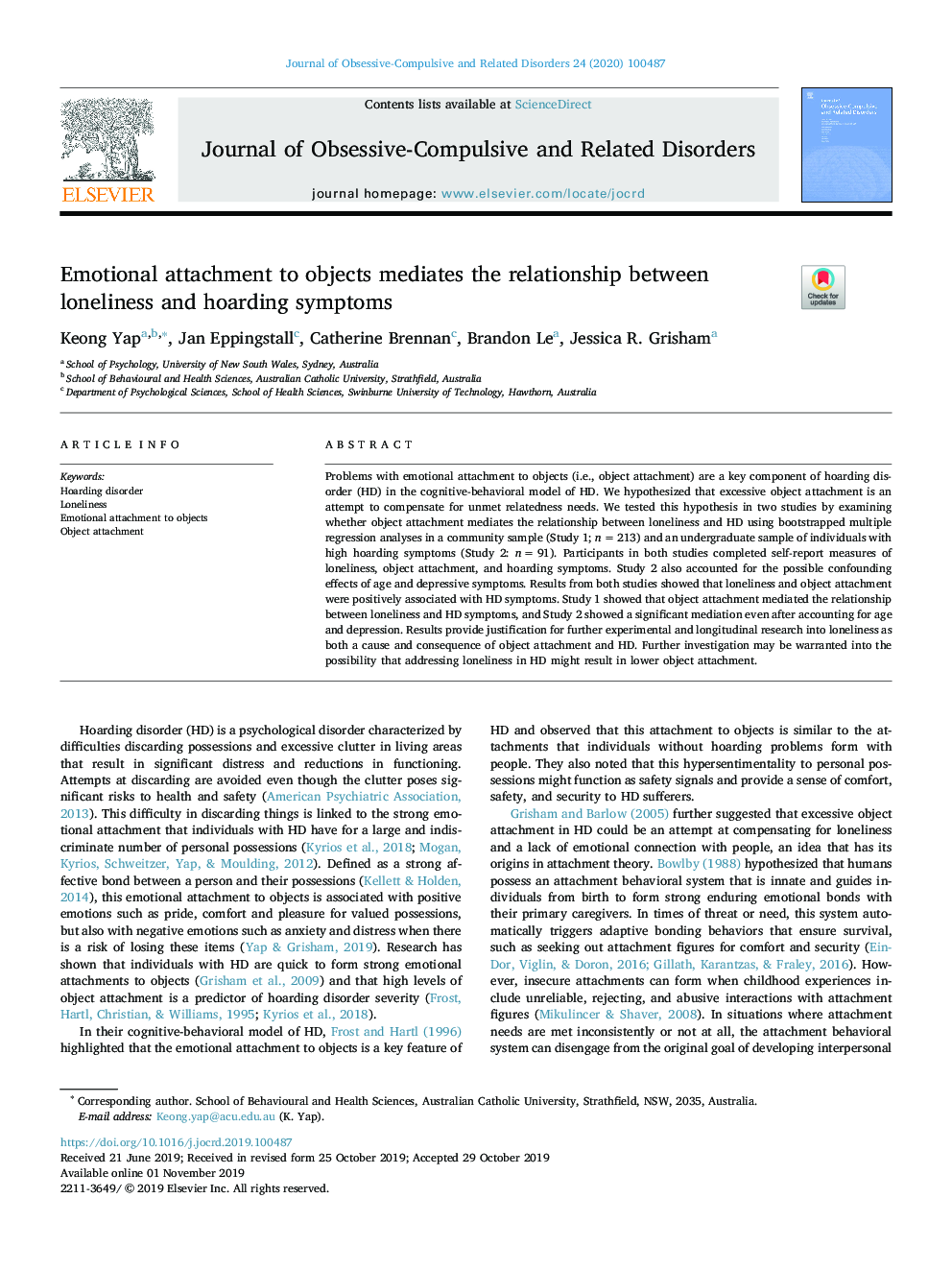| Article ID | Journal | Published Year | Pages | File Type |
|---|---|---|---|---|
| 13457578 | Journal of Obsessive-Compulsive and Related Disorders | 2020 | 6 Pages |
Abstract
Problems with emotional attachment to objects (i.e., object attachment) are a key component of hoarding disorder (HD) in the cognitive-behavioral model of HD. We hypothesized that excessive object attachment is an attempt to compensate for unmet relatedness needs. We tested this hypothesis in two studies by examining whether object attachment mediates the relationship between loneliness and HD using bootstrapped multiple regression analyses in a community sample (Study 1; nâ¯=â¯213) and an undergraduate sample of individuals with high hoarding symptoms (Study 2: nâ¯=â¯91). Participants in both studies completed self-report measures of loneliness, object attachment, and hoarding symptoms. Study 2 also accounted for the possible confounding effects of age and depressive symptoms. Results from both studies showed that loneliness and object attachment were positively associated with HD symptoms. Study 1 showed that object attachment mediated the relationship between loneliness and HD symptoms, and Study 2 showed a significant mediation even after accounting for age and depression. Results provide justification for further experimental and longitudinal research into loneliness as both a cause and consequence of object attachment and HD. Further investigation may be warranted into the possibility that addressing loneliness in HD might result in lower object attachment.
Related Topics
Health Sciences
Medicine and Dentistry
Psychiatry and Mental Health
Authors
Keong Yap, Jan Eppingstall, Catherine Brennan, Brandon Le, Jessica R. Grisham,
